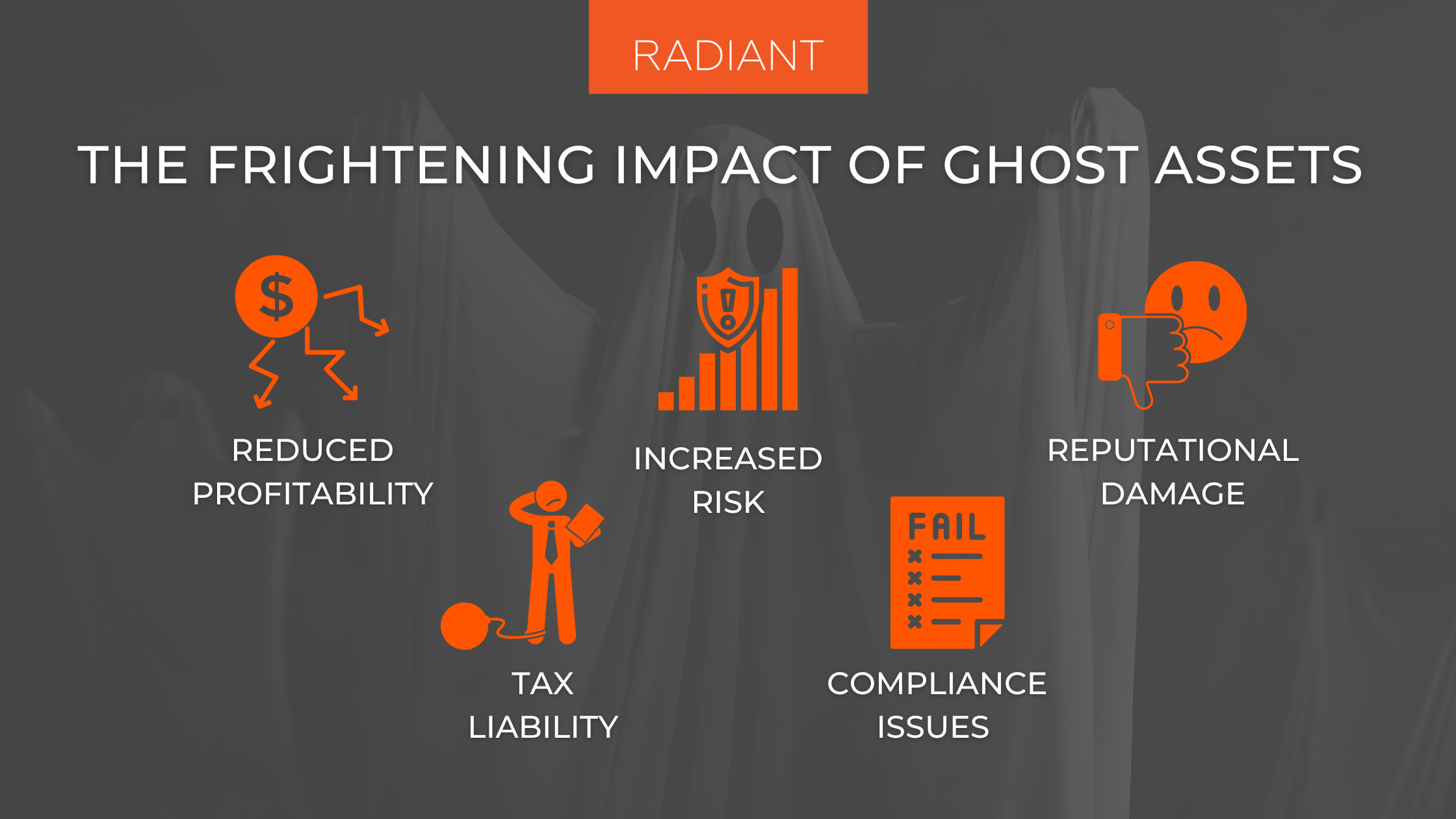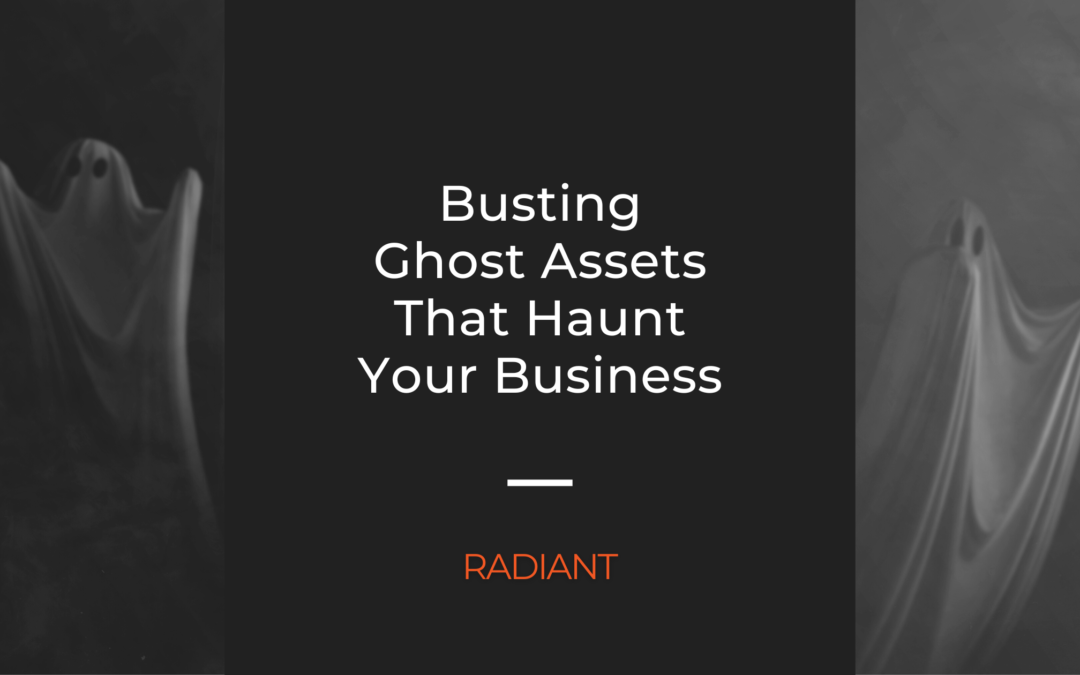It’s the middle of the night and you’re jolted awake by a horrible dream. In it, your business is hemorrhaging money and you can’t seem to find the source. You wake up panicking, relieved that it was only a dream.
But then it hits you- maybe this nightmare is actually a warning from above. Maybe your business IS losing money and you just haven’t been able to track all of your assets.
Don’t let your business become haunted by ghost assets! Here’s what you need to know about busting ghost assets.
What Are Ghost Assets? Where Do They Come From?
Ghost assets. No, they’re not the result of a ghost haunting your office. But they can be just as spooky. So what are ghost assets? They’re any fixed asset that appears on a company’s balance sheet but is physically missing or otherwise rendered unusable.
Ghost assets can take many forms, from outdated equipment to unused software licenses. And they can come from many sources, such as previous employees who never returned their company-issued laptop or a new piece of equipment that was never properly incorporated into your workflow. In some cases, ghost assets may be the result of deliberate fraud, but more often they arise due to simple carelessness or inaccurate record-keeping.
While ghost assets may not always be sinister, they can have a number of harmful consequences for a company’s bottom line, and it is important for businesses to be aware of the risks associated with them.
The Scary Impact of Ghost Assets
The presence of ghost assets on a company’s balance sheet can have a number of negative impacts on the business, including:

– Reduced Profitability: Ghost assets can reduce profitability in a number of ways.
First, they can tie up capital that could be better used elsewhere. Second, they can lead to higher depreciation and maintenance costs. Third, they can create accounting problems if their value has decreased but has not been written down. Finally, ghost assets can be a source of liability if they are not properly disposed of.
When a company has ghost assets, it is essentially bleeding money.
– Increased Risk: Ghost assets can also increase the risk of financial problems for a company if they are not properly accounted for.
This is because they can create an inaccurate picture of the company’s financial health, which could lead to difficulties in securing loans or investments.
In addition, ghost assets can tie up funds that could be better used elsewhere, and they may even be used to hide fraud.
– Regulatory Compliance Issues: If ghost assets are not properly accounted for, it could lead to compliance issues with regulatory bodies such as the Securities and Exchange Commission (SEC).
For example, if a ghost asset is mistakenly classified as an active asset, it could result in the company overstating its assets and violating regulatory guidelines. Similarly, if a ghost asset is not properly accounted for on the balance sheet, it could result in the company understating its liabilities and violating accounting standards.
If a company is found to have ghost assets, it may be subject to fines or other penalties.
– Tax Liability: Because ghost assets are still considered part of your company’s taxable property, you may be required to pay property taxes on them even though they no longer exist.
In addition, if you sell or dispose of ghost assets, you may be subject to capital gains taxes. In addition to paying taxes, you may also be subject to higher insurance premiums, as the insurer will factor in the potential liability when setting rates.
As a result, it is important to keep accurate records of your ghost assets and consult with a tax professional to ensure that you are properly complying with all tax laws.
– Reputational Damage: Ghost assets can also damage a company’s reputation.
This is because investors and other stakeholders will view the company as being financially weak and may lose confidence in its ability to generate future profits.
Additionally, news of the company’s financial troubles may damage its reputation and make it less attractive to customers and partners.
To avoid these problems, businesses should take steps to ensure that they remove ghost assets from their records in a timely manner.
How To Identify Ghost Assets
If you suspect that ghost assets may be a problem for your business, conducting a comprehensive asset audit is the first step in getting a handle on the situation.
This audit should include a review of all physical assets, all intangible assets, and all financial records. Any discrepancies between the records and the physical reality should be investigated.
Once ghost assets have been identified, the next step is to eliminate them. This can be done by selling, donating, or recycling the assets.
However, simply removing the ghost asset from the books is not enough and it is important to take steps to prevent them from haunting again in the future.
Eliminate Ghost Assets For Good
So how do you eliminate ghost assets for good? Asset tracking solutions can help businesses of all sizes keep track of their physical assets, and prevent ghost assets from appearing in the first place.
An asset tracking software solution can help to eliminate ghost assets by providing a real-time view of where each asset is located and who is using it. This asset data can then be used to reassign idle assets or remove them from the company’s inventory entirely.
In addition, asset tracking can help to prevent ghost assets from appearing in the first place by providing visibility into the utilization of each asset through asset tagging. By tagging each asset with a unique identifier and keeping track of how each asset is being used, it becomes easier to identify when an asset is no longer needed and take steps to remove it from the fixed asset ledger.
These solutions are usually cloud-based, making it easy for authorized users to access asset information from anywhere. In addition, asset tracking solutions often include features such as work order management that make it easy to track and manage assets.
By using an asset management solution, businesses can save time and money while preventing ghost assets from becoming a problem.
Who You Gonna Call?
The best way to deal with ghost assets is to prevent them from appearing in the first place. That means regular asset audits and keeping a close eye on your asset tracking system. By being proactive, you can eliminate ghost assets for good and keep your business running smoothly.
At Radiant, we provide asset tracking solutions that make it easy for you to keep track of all your company’s critical assets, including those that may be classified as ghost assets. Contact us today to learn more about our solution and request a demo below.
Last Updated on October 4, 2022 by Radiant

